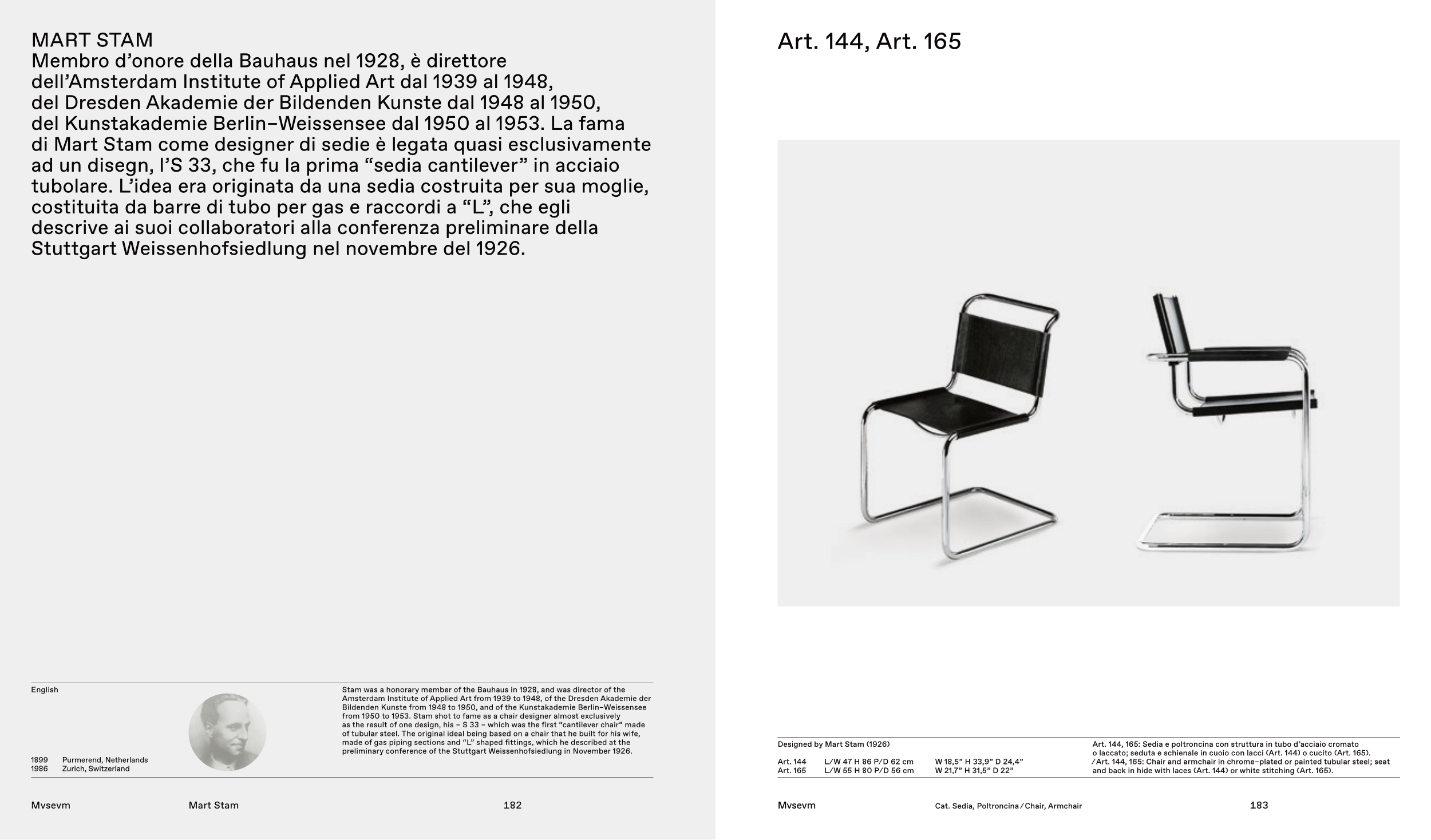182
183
Art. 144, Art. 165
Mvsevm
Cat. Sedia, Poltroncina ⁄ Chair, Armchair
Designed by Mart Stam (1926)
Art. 144
L ⁄ W 47 H 86 P ⁄ D 62 cm
Art. 165
L ⁄ W 55 H 80 P ⁄ D 56 cm
W 18,5” H 33,9” D 24,4”
W 21,7” H 31,5” D 22”
Art. 144, 165: Sedia e poltroncina con struttura in tubo d’acciaio cromato
o laccato; seduta e schienale in cuoio con lacci (Art. 144) o cucito (Art. 165).
⁄ Art. 144, 165: Chair and armchair in chrome–plated or painted tubular steel; seat
and back in hide with laces (Art. 144) or white stitching (Art. 165).
MART STAM
Membro d’onore della Bauhaus nel 1928, è direttore
dell’Amsterdam Institute of Applied Art dal 1939 al 1948,
del Dresden Akademie der Bildenden Kunste dal 1948 al 1950,
del Kunstakademie Berlin–Weissensee dal 1950 al 1953. La fama
di Mart Stam come designer di sedie è legata quasi esclusivamente
ad un disegn, l’S 33, che fu la prima “sedia cantilever” in acciaio
tubolare. L’idea era originata da una sedia costruita per sua moglie,
costituita da barre di tubo per gas e raccordi a “L”, che egli
descrive ai suoi collaboratori alla conferenza preliminare della
Stuttgart Weissenhofsiedlung nel novembre del 1926.
Mvsevm
Mart Stam
Stam was a honorary member of the Bauhaus in 1928, and was director of the
Amsterdam Institute of Applied Art from 1939 to 1948, of the Dresden Akademie der
Bildenden Kunste from 1948 to 1950, and of the Kunstakademie Berlin–Weissensee
from 1950 to 1953. Stam shot to fame as a chair designer almost exclusively
as the result of one design, his – S 33 – which was the first “cantilever chair” made
of tubular steel. The original ideal being based on a chair that he built for his wife,
made of gas piping sections and “L” shaped fittings, which he described at the
preliminary conference of the Stuttgart Weissenhofsiedlung in November 1926.
1899
Purmerend, Netherlands
1986
Zurich, Switzerland
English


